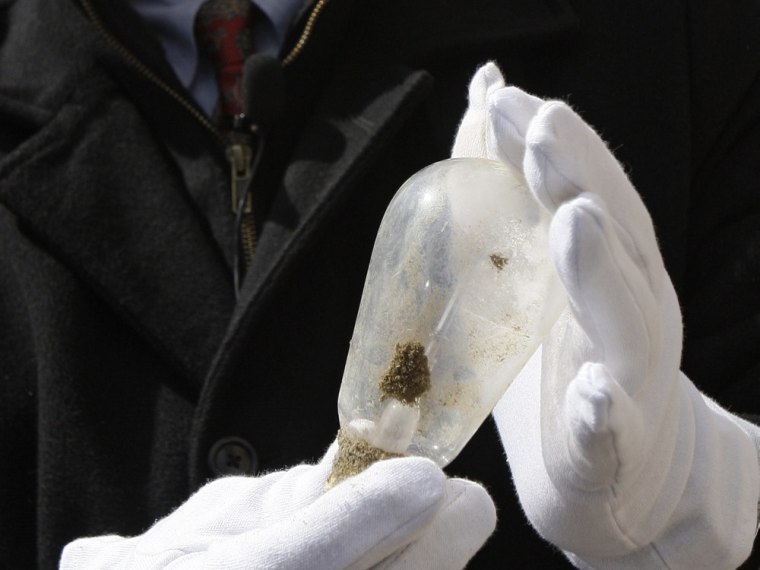After a century of progress in tech, the light bulb remains the same, perhaps the most enduring of backward technology in use on a large scale.
The federally mandated phase-out of inefficient bulbs has met with intense resistance, from the Tea Party to panicked buyers stockpiling a lifetime of the classic A-Line incandescent, with its "warm" glow.
But beyond paranoid rhetoric is nostalgia: More than one hundred years after Thomas Edison's breakthrough, most consumers still want their light bulbs in the traditional pear shape. But creating an efficient light bulb in the traditional shape -- and that gives off that same warm light consumers have become accustomed to -- is proving tough for manufacturers.
(Read more: 11 ways your daily routine will never be the same again)
The pear shape no longer represents a vital production but is still what many people want to see on store shelves.
"Lighting is an art and a science. The appearance of fixtures and bulbs becomes part of our culture, and when you try to change culture, you better have a strong reason to do so," said Terry McGowan, a former manager of the lighting division at GE who now serves as director of engineering for the American Lighting Association.
The light bulb of old, McGowan said, was significant because you could “bounce it on the floor and it will not break.
“It will bounce like a ball.”
The classic form also houses several tricky engineering problems (the need for a heat sink and lighting quality that recreates the diffuse, "warm" light to which homes lit by incandescent bulbs have become accustomed). Companies are still working on design and engineering solutions to these challenges within an LED frame.
How to make an appealing LED light has divided manufacturers. The competition is a once-in-an-era opportunity, as LED bulbs can provide up to 25,000 hours of residential use.
"How we transition to CFL [compact fluorescent] bulbs and LEDs is a billion-dollar question," said Todd Manegold, director of LED lamps at Philips. Billion, literally: There are about 5.6 billion light bulbs in U.S. residential use.
(Read more: The booming business of 3-D printing)
"Manufacturers are trying to capture these billions of sockets now residing with incandescent bulbs," McGowan said. "And you have to be the size and shape of what's in those sockets. If you don't get that socket now, it won't be available again until who knows when. It's a desperate horse race."
John Stranick, head of GE's North American consumer lighting business, said the classic A-line shape is one that consumers grew up with. Although inefficient, he said, it diffuses heat well and has a nice light quality.
GE's experience with compact flourescents showed that even after the company had worked out start-up time and warmth problems, consumers would reject them based on design.
"Even before we got to LEDs, we had to replicate that iconic shape," Stranick said.
(Read more: Crowdfund this: Medical devices)
McGowan of the American Lighting Association said Phillips has been "carefully treading the line between appearance and function" and has managed to make LED lighting interesting, even if it can be argued that won't be the quickest route to mass adoption.
Advanced Lumonics has a museum with two examples of every LED bulb ever made, a kind of Noah's Ark of LED history, including "corncob" and "snowcone" designs. The "scrapped" designs of LEDs' early days also include external "fins" used as an approach to the heat sink issues, and colored phosphor coatings over the bulb exterior as an approach to light diffusion—LEDs by nature emit light in one direction, while a residence typically requires an omni-directional lighting source.
Costigliola said Cree wants to make a bulb with the Edison shape, and that the company's sales data may show that for mass adoption to take place, the standard shape needs to be a big part of the equation.
"The Cree bulb isn't a show-off," he said, compared with a higher-priced Switch "liquid-cooled" bulb, or a Philips' Wi-Fi-enabled Hue bulb or LED lighting fixture—the latter costing several hundred dollars. Though he stressed that price remains king: When Philips lowered the price on its yellow phosphor-coated LED bulbs, a technical solution Philips has since moved away from in newer designs, EarthLED.com saw a bump in orders, able to "move 4,000 a month on Amazon."
McGowan said that it's easy to lose sight of the historical fact that no light source ever invented has completely disappeared.
"The Amish have nothing but kerosene lamps in their living rooms," he said. "The consumer can't be dictated to in lighting, and the faux old-fashioned bulbs with carbon filaments that glow are very popular now. It's appearance lighting, not efficient lighting."
"LEDs won't take over 100 percent of the market. All these technologies will exist, but comfort level will dictate how much adoption there is, and if you make it familiar it accelerates the comfort level," he said.
